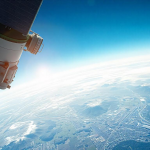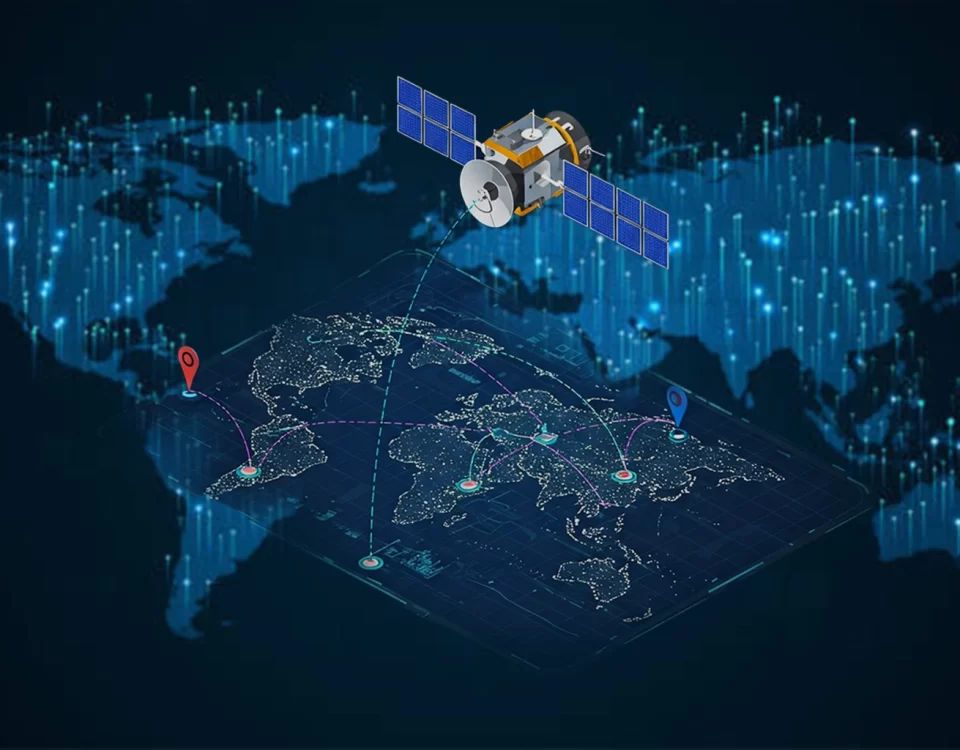
What Is a Satellite?
January 6, 2025
Applications of OPTICSatellite in remote sensing
January 26, 2025Space is a huge and empty place, filled with stars and planets that move around each other because of gravity. Imagine a satellite floating in space, a tiny spacecraft millions of miles from Earth. How does it know where it’s pointing and how to stay on course? One crucial tool is the magnetometer, a device that acts like a celestial compass. Magnetometers help satellites navigate by using Earth’s magnetic field, which is like an invisible map. This essay will explain how magnetometers work on satellites, what they are used for, and some of the problems that scientists face when using them.
The Principle of Magnetism
Magnetometers work because of how magnets interact with each other. Earth acts like a giant magnet, creating its own magnetic field. This field is made by the movement of liquid iron deep inside Earth and it protects us from space. Magnetometers are tools that measure the strength and direction of magnetic fields. They work by sensing how an outside magnetic field affects a special part inside the instrument. This effect can happen in different ways, depending on the type of magnetometer.
Types of Magnetometers Used in Satellites
There are different types of magnetometers used in space, each with its own strengths and weaknesses:
- Fluxgate Magnetometers: These are very common. They use a ring-shaped core that reacts to the magnetic field. By measuring how this core changes, we can find the strength and direction of the field.
- Overhauser Magnetometers: These use a special technique called nuclear magnetic resonance to measure the field. They are very sensitive and accurate, perfect for measuring weak magnetic fields.
- Search Coil Magnetometers: These have coils of wire that create electricity when a magnetic field changes. By measuring this electricity, we can find the strength and direction of the field.
- Ring Core Magnetometers: These use a ring-shaped core made of a magnetic material. They measure how the core’s magnetic properties change to find the strength of the field.
Applications of Magnetometers in Satellite Missions
Magnetometers play a crucial role in a wide range of satellite missions, contributing to our understanding of space weather, Earth’s magnetic field, and the behavior of celestial bodies. Some of the key applications include:
Space Weather Monitoring
- Satellites with magnetometer watch how Earth’s magnetic field changes. This helps us understand things like solar storms, which can harm satellites and astronauts. This information is important to keep satellites and astronauts safe and to make sure communication systems work properly.
Navigation and Attitude Determination
- Magnetometers can help satellites figure out their position in space by measuring Earth’s magnetic field. This is crucial for pointing antennas and scientific instruments in the right direction.
Scientific Research
- Magnetometers are essential for learning about Earth’s magnetic field, how it changes, and how it interacts with the sun. They also help us understand the magnetic fields of other planets.
Mineral Exploration
- Satellites with magnetometers can find minerals on Earth by detecting changes in the magnetic field caused by these minerals.
Challenges and Considerations in Satellite Magnetometry
Even though magnetometers are very useful, there are some challenges when using them in space:
- Magnetic Interference: Other magnetic materials on the satellite can interfere with the magnetometer’s readings. Scientists need to carefully design the satellite and use special shielding to minimize this problem.
- Space Environment: The harsh conditions in space, like radiation and extreme temperatures, can affect how well the magnetometers work. They need to be very strong and thoroughly tested to make sure they can survive in space.
- Calibration and Data Processing: Getting accurate readings from space-based magnetometers requires careful calibration and processing of the data. This often involves using complex computer programs and advanced data analysis techniques.
Future Directions in Satellite Magnetometry
As technology improves, we can expect to see better satellite magnetometer. These improvements might include:
- Smaller Size: Magnetometers will become smaller, lighter, and use less power, allowing them to be used on more types of satellites.
- Increased Sensitivity: New materials and sensor technology will make magnetometers more sensitive, enabling more accurate measurements of weak magnetic fields.
- Better Integration: Magnetometers may be combined with other sensors, like GPS receivers and star trackers, to give a more complete picture of the satellite’s position and orientation.
Conclusion
Magnetometer is a essential tool for exploring space and conducting scientific research. By using Earth’s magnetic field, these instruments help us understand how space behaves, how planets and other celestial bodies act, and where to find natural resources. As technology improves, we can expect even better magnetometers that will allow us to explore space and make new scientific discoveries in even more amazing ways.




